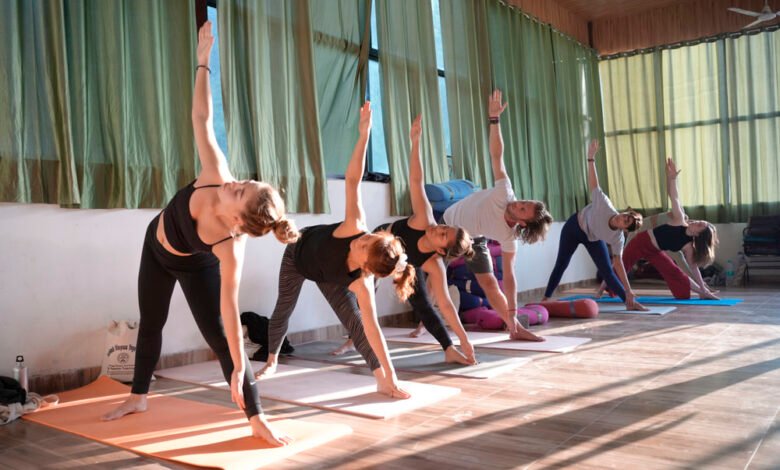
Hatha Yoga, one of the most practiced forms of yoga, is known for its focus on physical postures, or asanas, as a way to align the body, mind, and spirit. The asanas of Hatha Yoga serve as a foundation for building strength, flexibility, and concentration, making them an essential part of the yoga journey. Whether you’re a beginner or a seasoned practitioner, these postures offer profound benefits for both physical health and mental well-being.
Understanding the Essence of Hatha Yoga
Hatha Yoga emphasizes balancing opposites—ha meaning sun and tha meaning moon—representing the dualities in life, such as effort and ease or strength and flexibility. By practicing the asanas of Hatha Yoga, you create harmony within the body, uniting the physical and subtle energies. This balance helps prepare the body for deeper states of meditation and mindfulness.
Key Asanas of Hatha Yoga
Let’s explore some of the most transformative asanas in Hatha Yoga and how they can benefit your practice.
1. Tadasana (Mountain Pose)
Tadasana, or Mountain Pose, is often the starting point for many other asanas in Hatha Yoga. It may seem simple, but it’s a powerful posture for building awareness of alignment, balance, and posture.
- Benefits: Improves posture, strengthens the legs and core, promotes a sense of grounding.
- How to Perform: Stand with feet together, arms by your sides, and evenly distribute your weight on both feet. Engage your thighs, lift your chest, and lengthen your spine while keeping the shoulders relaxed.
2. Adho Mukha Svanasana (Downward-Facing Dog)
One of the most recognized asanas of Hatha Yoga, Downward-Facing Dog is a rejuvenating posture that stretches the entire body and calms the mind.
- Benefits: Stretches the hamstrings, calves, and spine; strengthens arms and shoulders; relieves stress and tension.
- How to Perform: Start on your hands and knees, then lift your hips toward the sky, creating an inverted “V” shape with your body. Keep your hands shoulder-width apart and feet hip-width apart, pressing your heels toward the floor.
3. Trikonasana (Triangle Pose)
Trikonasana is a standing pose that focuses on creating stability while stretching the sides of the body. It’s a great way to enhance balance and flexibility.
- Benefits: Stretches the hips, hamstrings, and groin; strengthens the legs; improves balance and focus.
- How to Perform: Stand with your feet wide apart. Turn your right foot out, keeping the left foot slightly turned in. Extend your arms parallel to the floor, then reach your right hand toward your ankle while your left arm extends up toward the ceiling. Repeat on the other side.
4. Virabhadrasana I (Warrior I Pose)
Warrior I is a powerful standing posture that embodies strength, focus, and stability. It’s an essential asana for building both physical endurance and mental resilience.
- Benefits: Strengthens the legs, opens the hips and chest, improves focus and balance.
- How to Perform: Step one foot forward into a lunge position, with your back foot turned slightly inward. Lift your arms overhead and square your hips forward. Sink into the front knee, creating a strong, grounded stance.
5. Setu Bandhasana (Bridge Pose)
Bridge Pose is a backbend that energizes and revitalizes the spine while also opening the chest and stretching the front of the body.
- Benefits: Strengthens the glutes and lower back, stretches the chest and neck, improves spinal flexibility.
- How to Perform: Lie on your back with your knees bent and feet hip-width apart. Press into your feet and lift your hips toward the ceiling, keeping your thighs parallel. Interlace your hands under your back and press your arms into the mat for support.
The Importance of Breath in Hatha Yoga
While performing the asanas of Hatha Yoga, the breath, or pranayama, plays a crucial role. Deep, mindful breathing helps to create a meditative state, allowing practitioners to stay focused and present in each pose. This connection between breath and movement also enhances the flow of energy, or prana, throughout the body, promoting healing and inner calm.
Cultivating Mindfulness Through Asanas
One of the core aspects of Hatha Yoga is the integration of mindfulness into physical practice. By focusing on the alignment, movement, and breath during each asana, practitioners can cultivate a deeper awareness of their bodies and minds. This mindfulness not only improves the physical benefits of the practice but also extends beyond the mat, promoting greater clarity and peace in daily life.
Conclusion: Embrace the Power of Asanas of Hatha Yoga
The asanas of Hatha Yoga are much more than physical exercises. They are a pathway to self-awareness, balance, and transformation. Whether you’re seeking to improve your flexibility, reduce stress, or deepen your spiritual practice, the poses in Hatha Yoga offer a holistic approach to wellness. Embrace these asanas in your practice and experience the profound benefits they bring to your body, mind, and soul.



